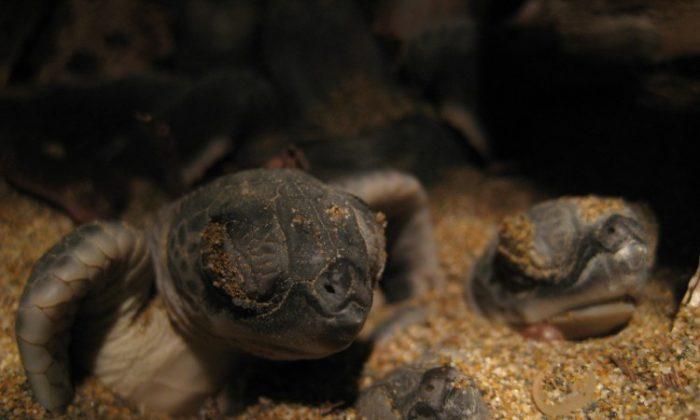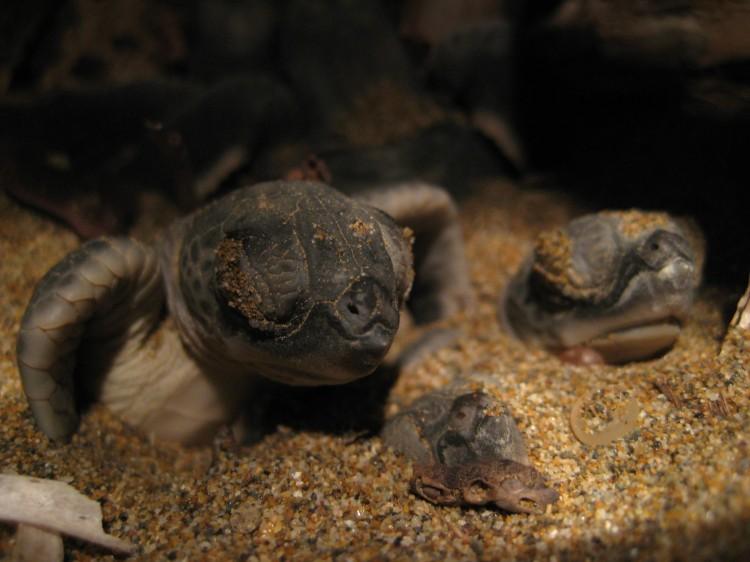Green turtles, Chelonia mydas, are better equipped to cope with climate change than expected, according to a new study published in the journal Proceedings of the Royal Society B on Jan. 25.
Marine turtles exhibit a breeding phenomenon called temperature-dependent sex determination, whereby more female hatchlings develop when incubation temperatures are higher. Over time, it is possible that some populations could be composed mainly of females with potential inbreeding and health risks due to low numbers of males.
A team of researchers studied a green turtle population that nests in Northern Cyprus, where the continents of Europe, Asia, and Africa meet. Owing to high temperatures in summer, the hatchlings are 95 percent female, and the scientists hypothesized that a single male could be breeding with several females.
However, using DNA testing to determine the babies’ paternity, the team discovered that there are 28 males breeding with 20 females to produce eggs at this site, creating an average ratio of 1.4 males per female. There was no evidence that any males mated with more than one female.
The researchers also tracked the males via satellite, and found that they travel thousands of miles each breeding season, suggesting that they could also be breeding with females in Turkey and North Africa.
“It is fantastic to know that there are so many males fathering offspring in this population of green turtles,” said research team leader Lucy Wright at the UK’s Exeter University in a press release. “There is great concern that a lack of males could lead to inbreeding in small populations of marine turtles, potentially causing a population crash.”
“However our research suggests that there are more males out there than expected considering the female-biased hatchling sex ratios and that their mating patterns will buffer the population against any potential feminizing effects of climate change.”
Research projects like this can help to establish how to mitigate the effects of global warming on turtles.
“Climate change remains a great threat to marine turtles, but our ongoing research will help us focus on where the priority areas are for management that may help them cope with future change,” concluded corresponding author Annette Broderick, also at Exeter University, in the release
The Epoch Times publishes in 35 countries and in 19 languages. Subscribe to our e-newsletter
.







Friends Read Free